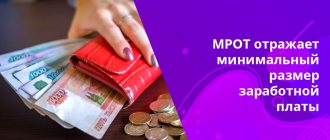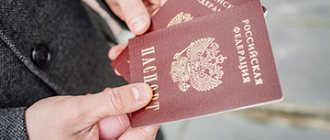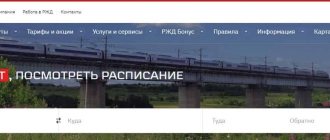In order to strengthen social measures to support families with children and increase the birth rate in the Russian Federation, changes were adopted in the country's legislation. In accordance with them, new types of benefits will be introduced in 2021. The innovation was announced in 2021 as a “reboot of demographic development policy,” according to which measures are being taken at the legislative level to improve the lives of families with children.
The last global change in this legislation was adopted more than 10 years ago, when it was decided to provide maternity capital to families with two or more children. Currently, this material support continues to function, since its effect has been extended until 2021. At the same time, maternity capital can be spent on various purposes, the most common of which is improving the living conditions of the family. In addition, this one-time benefit can be used to pay for children’s education, rehabilitation and social services. adaptation of disabled children, creation of pension conditions for mothers. In some regions it was planned to allow the use of maternity capital to buy a car for the family, but so far this idea has not been translated into reality.
At this point in time, it has been decided that low-income families with children need to be provided with additional targeted assistance to improve their standard of living. In this regard, as of January 1, 2018, additional benefits were introduced that have a certain nature and features.
Child benefits for low-income families in 2021: news
According to Law No. 418-FZ dated December 28, 2017, in 2021 low-income families are provided with a new type of benefit. If a woman gave birth to her first child later than January 1, 2018, the spouses can apply for a new monthly benefit. However, to provide it, certain conditions must be met, which include the following:
- the woman and the baby must be citizens of the Russian Federation and, accordingly, permanently live in the territory of their citizenship
- The child must be born no earlier than 2021.
- To determine the profitability of a family, it is established that the average per capita income for each person in the family should be no more than 1.5 times the minimum subsistence level established in the territory of residence. In this case, the value of the minimum for living is taken based on information for the 2nd quarter of the year preceding the assignment of the right to benefits
If all conditions are met, then the monthly benefit is equal to the subsistence minimum per child recorded in the second quarter of 2021 in the constituent entity of the Russian Federation where the family has permanent registration. It is necessary to point out that when calculating family income, not only the earnings of each parent from professional work are taken into account, but also other income, for example, other types of benefits, rent payments, royalties, income from deposits, and other social payments.
In addition, an innovation is the fact that now, upon the birth of a second child, you can immediately apply for maternity capital. In other words, this social assistance can be received immediately, rather than waiting until the moment established by law arrives. A monthly payment is allocated from the maternal capital: the right to it, as in the previous case, is determined based on the income of the people in the family. The payment is equal to the minimum cost of accommodation fixed in a particular region of registration.
Results
Federal and regional legislation provides for a number of benefits, benefits and other types of assistance to low-income families. However, there is no single federal mechanism for providing it, as a result of which residents of some regions receive more assistance than residents of others.
Sources:
- Tax Code of the Russian Federation dated 05.08.2000 No. 117-FZ
- Federal Law “On State Social Assistance” dated July 17, 1999 No. 178-FZ
- Federal Law “On the procedure for recording income and calculating the average per capita income of a family and the income of a citizen living alone for recognizing them as low-income and providing them with state social assistance” dated April 5, 2003 No. 44-FZ
You can find more complete information on the topic in ConsultantPlus. Free trial access to the system for 2 days.
Monthly child benefit for low-income families
Payments for children to low-income families are characterized by targeting and need. To apply for it, you must first acquire the status of a low-income family. Accordingly, the main criterion by which funds will be distributed between families is the low level of income for each family member.
To receive this benefit you must:
- first, obtain documents confirming the status of a low-income family. To do this, you need to cooperate with social security authorities, submit an application and submit the necessary supporting documents. Please note that this status is granted only to families who find themselves in dire straits due to circumstances beyond their control. Families where parents lead an immoral lifestyle and do not want to work are not granted status
- secondly, apply for benefits using a special form. Please note that the benefit is of an application nature, that is, to receive it it is necessary to fill out and submit a special application to state social authorities. If a positive decision is made on it, the family will be able to receive benefits until the child reaches 1.5 years of age.
It should be noted that the monthly benefit of this type is a regional payment, that is, the money for it is spent from the budget of the subject. In addition, the amount of the benefit is fixed based on the subsistence level for children determined for a specific territory. Since this indicator varies for different subjects of the Russian Federation, the benefits are not the same for families from different regions.
A positive point is the fact that benefits are indexed over time, since the cost of living increases over time. In accordance with this point, every year the family will receive a larger payment, although prices for significant services and the food basket will also increase.
In addition, it should be noted that low-income families, like ordinary families, have the right to financial assistance for childcare up to 1.5 years, which is calculated as 40% of the average monthly salary for the 2 previous calendar years. It can be issued either through the employer or through social security, and it will amount to RUB 3,142.33 monthly. for the first child.
What families can qualify for low-income status?
Before figuring out how to obtain the status of a low-income family in 2021, you should clarify who is part of the family in question. This is important because it determines whose income is taken into account when drawing up an application, and whose documents are taken into account. Family composition means those persons who live under the same roof, are related by blood or documents and have a common budget. That is, they run a joint household, not only have a common income, but also jointly bear expenses.
If we talk about a specific circle of people considered relatives (according to the state) and capable of obtaining a position, then this includes spouses whose marriage is officially registered, their children (natural or adopted, stepdaughters and stepsons), parents (grandparents), brothers and sisters. But only if they meet the family criteria listed above.
If we talk about people who are actually family members, but will not be taken into account when determining low-income status, then in 2021 they include people who are in prison or undergoing military service in the army. This category also includes people who were sent for compulsory treatment by court decision and citizens who are already fully supported by the state.
There are certain situations when people who are strangers by law live together and lead a common life. Social services may consider their case separately. There is also a chance that such a “family” will be recognized as low-income under a separate procedure.
Amount of child benefit for low-income families
The amount of child benefit for low-income families is not the same for different constituent entities of the Russian Federation, since it depends on the specific minimum subsistence level per child in the region. Thus, we can provide brief data on some regions of the Russian Federation:
| Region | Living wage per child, rub. |
| Chukotka | 22 222 |
| Murmansk | 15 048 |
| Moscow | 14 252 |
| Krasnoyarsk | 12 020 |
| Tver | 10 625 |
| Novgorod | 10 176 |
| Chechnya | 9 650 |
| Orenburg | 8 958 |
| Tatarstan | 8 490 |
| Belgorod | 8 490 |
As can be seen from the table, the difference between the largest and smallest values of the subsistence minimum is quite large - 13,732 rubles. Indexation of benefits will always be carried out throughout the Russian Federation on a constant date - February 1 of each year in correlation with the level of inflation that was observed over the past calendar year.
To receive this payment, you need to submit a written application to the social security service, and this is one of the differences from other benefits that are paid at the expense of the Social Insurance Fund (through the employer) or at the expense of the Pension Fund of Russia (matkapital).
It is necessary to pay attention to this important point:
- if you use the help of government bodies to exercise the right to benefits before the child is 6 months old, then the payment is made taking into account the date of his birth
- if you apply to social security for benefits after the child is more than six months old, payments will be made taking into account the date of filing the application
To receive a monthly benefit, you must fill out an application and submit it to the state social security authorities along with the accompanying package of documentation. It is imperative to attach certificates of family income received for the last year as proof of total income. The benefit will be determined for one year only, and after its expiration the necessary documentation must be resubmitted.
Payment of benefits is not assigned or terminated when the following situations are established:
- the child is 1.5 years old
- initially the family did not meet the status of being poor
- the child or benefit claimant has died
- the family moved to another place of residence in another region
Types of state social assistance
Such measures to support the poor are primarily expressed in cash payments - social benefits, subsidies, and other types. This helps those in need to independently distribute funds according to their needs.
The second type of assistance is expressed in kind support - fuel, medicines, clothing, shoes, food, and so on. The main purpose of social assistance to low-income families is to increase the standard of living of citizens to a subsistence level.
You can find out what low-income families in a constituent entity of the Russian Federation are entitled to, including the amount of cash benefits, from the social protection authorities. Here we are required to provide background information to all applicants.
Benefits for low-income families when a child is born
When a child is born, a low-income family, in addition to the monthly payment, also has the right to claim a lump sum payment associated specifically with the birth of the baby. This benefit is expected to be received by all families into which a child is born.
As of January 2021, its size was 16,350.33 rubles, and after recalculation taking into account the indexing coefficient from 02/01/2018, it became equal to 16,759.09 rubles. This type of benefit is federal, not regional, and therefore its value is determined throughout the territory of the Russian Federation.
You can receive benefits when a child is born in the following ways:
- for working citizens - through their employer, and the money is paid from the Social Insurance Fund budget
- for unemployed citizens - through the social welfare service, and finances are paid from their budget
One of the spouses can submit an application for payment, and this must be done no later than 6 months from the date of birth of the child. If the baby is stillborn, the parents do not have the right to claim benefits. In a situation where not one, but two or more babies are born, a lump sum benefit is assigned to each of them. Upon divorce, the payment is received by the parent with whom the child will live.
The procedure for assigning social assistance
In order for a family or a citizen living alone to be recognized as poor and in need of state social assistance, they must document the fact of their difficult financial situation. In each case, the decision is made by the social protection authority operating at the place of residence or stay of citizens.
The decision on appointment or refusal is made by the local social protection authority. To do this, an applicant for assistance from the state must submit an application (on his own behalf or on behalf of the entire family). Such an application is submitted:
- To the social protection authorities directly.
- Through the multifunctional public services center.
The application indicates information about the income of the applicant and all other family members, about the real estate owned, and about receipt of income in kind. If by this time the family (or its individual member) is already receiving any type of social assistance, this information must be indicated in the application. Additional documentation confirming the financial situation of the applicant/family is attached to the application.
Consequently, it is possible to find out what a low-income family in a particular region can count on only through local social assistance authorities. The MFC will only accept documents, without providing background information.
How long does it take to process an application?
In accordance with Art. 8 178-FZ, regardless of the form of application, a decision on it is made within 10 working days from the date of acceptance for processing. An increase in this period is possible if additional verification of the data provided by the applicant is carried out. The maximum period is 30 working days.
The social security authority is obliged to conduct a commission examination of the information. This is done through requests to authorized government bodies. During the survey, the following data is checked:
- Real income of all able-bodied family members - for the last 3 months preceding the application.
- The property mass owned by the family and each of its members individually.
- The fact of receiving or not receiving other types of social assistance.
The decision of the social security authorities is sent to the applicant in writing. The decision must be motivated: if it is a refusal, then the document indicates objective reasons with references to current legislation. At the same time, the applicant retains the right to appeal the decision of the social security authority to higher authorities or to court.
Benefits for the second child of a low-income family
When a second baby appears, low-income families acquire the right to the following types of financial support:
- lump sum birth benefit, which currently, taking into account the indexing coefficient, is equal to 16,759.09 rubles. You can get it through your employer or through government social security authorities.
- allowance for caring for a second child up to 1.5 years old, with a monthly value of 6284.65 rubles. It is also provided from the Social Insurance Fund through the employer or from the state social security service
- a benefit formed from maternity capital and paid monthly based on the cost of living in a specific region. This innovation has been implemented since January 1, 2018 and is aimed specifically at financial support for low-income families. To acquire the right to this benefit, you need to contact the Pension Fund with an application and supporting documents to prove your legal right to receive the payment. You can submit an application along with a package of documents for maternity capital, since this payment is allowed from the date of the birth of the second baby. The benefit is established based on the value of the subsistence minimum fixed in a particular subject, and therefore is different for the same low-income families
Housing subsidy
The state provides assistance to low-income people to improve their living conditions. The subsidies apply to citizens of the Russian Federation. State programs are implemented by:
- Registration of those in need of improved housing conditions. Social housing for low-income people is provided from the state or municipal housing stock.
- Purchasing your own real estate or building a house using a social mortgage. It is distinguished by preferential interest rates, the presence of social guarantees, and the ability to pay the down payment or part of the loan using maternity capital. There are special programs that provide additional financing for repayment of a mortgage loan from budget funds. Thus, according to the “Young Family” program, up to 70% of the mortgage amount can be obtained from the state budget to pay for the cost of purchased housing. In 2021, low-income citizens will be issued mortgages for construction or finished housing at 6%, the rest of the interest will be covered from budget funds.
To register, you should contact local authorities, write an application and provide the following documents:
- passport of adult citizens;
- children's birth certificate;
- Marriage certificate;
- certificate of absence of residential property;
- certificate of family composition;
- income certificate.
The decision is made within a month, but before making it, the living conditions are examined by a commission. Mostly housing subsidies for low-income people are provided in the form of a certificate. To obtain housing in this way, you should follow the following algorithm:
- open a bank account for crediting certificate funds;
- choose residential real estate (when purchasing from a developer, its readiness must be more than 70%);
- draw up a purchase and sale agreement;
- provide an agreement to the bank to transfer funds to the seller;
- take a receipt from the seller about the receipt of money, draw up an act of acceptance and transfer of real estate;
- register property;
- provide a certificate of registration to the housing stock.
Conditions of receipt
Article 49 of the Housing Code of the Russian Federation states the right of low-income citizens to free priority housing. According to Article 51 of the Housing Code of the Russian Federation, citizens are recognized as in need of improved housing conditions and are registered for the allocation of social housing on the following grounds:
- There are no residential property owners or social housing tenants among family members.
- The premises in which low-income citizens live are unsuitable for habitation and are in disrepair.
- One of the family members is seriously ill.
- Several families live in one room (apartment, house).
- Owned or rented housing does not meet established standards. According to the law, 1 person is entitled to at least 18 square meters. m of living space.
- How to remove fat from the sides quickly, exercises and diet. How to remove fat on the sides at home, video
- How to remove headers and footers in Word. How to remove or change header and footer in Word text
- Cucumber salad for the winter without sterilization
Allowance for 3 children for low-income families
When a third child appears, low-income families can use financial support in the form of:
- lump sum birth benefit equal to RUB 16,759.09. (taking into account the indexation coefficient carried out on February 1, 2018). It is received both through the employing organization and through the social security authorities. If one parent is officially employed and the other is not, then the payment will be received by the spouse at the place of official work
- benefits for caring for a third child up to 1.5 years old, which is paid monthly at 6284.65 rubles. The benefit is assigned from the Social Insurance Fund through the involvement of the employer or from the social security service
- maternity capital, if for some reason the family did not use it in a timely manner when the second baby appeared
- payments for low-income families who have a third child before the child turns 3 years old. The condition for using the benefit is the fact that the third child must be born later than December 31, 2012. The amount of the benefit corresponds to one time the minimum subsistence level for children approved in the subject of residence. The benefit can be applied for by either spouse, for which he must submit an application and accompanying documentation to social security. This benefit applies not only to born but also to adopted children, and the payment is established for a calendar year with further extension upon provision of the necessary documents
The peculiarity of this benefit is that it was originally established to increase the birth rate in specific regions. Now the benefit has been canceled in certain constituent entities of the Russian Federation (in the Sakhalin region, Khabarovsk Territory, the Republics of Crimea and Komi, etc.), since the required fertility rates have been achieved there.
What does “poor family” mean in the Russian Federation?
Along with this term, a related concept is used - low-income single citizens and families, who also have the right to participate in state social support programs. Such categories of citizens are usually called those in need. This term refers to a low level of wealth for a family whose average per capita income is below the subsistence level established in a separate subject of the Russian Federation.
Every year, in each subject of the federation, a living wage is established, which is a guideline for the normal living of one citizen. If the income (in all forms) of a citizen is below this limit, then he has the right to receive state social support. For these purposes, the country has a system of federal and municipal legislation.
Documents for obtaining benefits for low-income families with children
To exercise the legal right to receive child benefits, spouses of a low-income family must submit the necessary documents, namely:
- documents indicating that the family has low-income status
- application for a particular benefit
- marriage certificate
- identity documents of spouses
- birth/adoption certificates for children or passports
- income certificates for all family members
- certificate or extract from the register of ownership of property (if in possession)
- an excerpt from the house register indicating the composition of the family living at the registration address
- employment contracts, books and other documentation if necessary
- certificates from the other spouse or from social security that payments were never established or paid to him
- certificate from the registry office according to sample No. 25 when including information about the child’s father in the birth certificate (for single mothers)
- bank card details
Let us note the following point: if benefits are received from the Social Insurance Fund through the employer, then, as a rule, the accountant monitors its provision. If benefits need to be received from the Pension Fund or a social security organization, then low-income families must worry about this on their own. So, they need to collect documentation and contact the necessary government agencies. It should be clearly understood that if you do not apply for benefits on time yourself, then after a certain time you may lose the right to receive them. In accordance with this, it is necessary to study in detail all the issues and nuances of receiving this or that payment and collect a complete package of documents in order to receive financial assistance from the state in the very near future.
What is needed to recognize a low-income family
The main condition for paying child benefits to low-income families, as well as providing other assistance, is that the family acquires low-income status.
The procedure for recognition as such is regulated by the provisions of the law “On the procedure...” dated 04/05/2003 No. 44-FZ. According to Art. 2 of this law, the status of a low-income family is assigned on the basis of information submitted by citizens. Social protection authorities at the place of residence of the family deal with these issues. Security assessment is carried out according to two parameters:
- the amount of average monthly income per family - calculated for the last 3 months preceding the application;
- assessment of property security, that is, checking whether the family’s property (primarily real estate and vehicles) does not exceed certain standards in the region of residence.
Important! According to Art. 13 Federal Law No. 44, the family includes spouses, their parents and children (including adopted children, as well as stepchildren and stepchildren), sisters and brothers who live together. Other persons, even if they live together, are not included in the family.
According to Art. 3 Federal Law No. 44 to obtain the status of a low-income family, you must write an application and submit:
- copies of passports (birth certificates) of the applicant and other family members;
- copies of documents for real estate and transport;
- marriage certificate (if available);
- 2-NDFL certificates and other documents confirming the availability of income;
- certificate of family composition.
The list of documents differs depending on the specific situation or region. In addition, social protection authorities receive some information on their own - from the registry office, the tax inspectorate, Rosreestr, and the traffic police.
Average monthly income
According to Art. 15 Federal Law No. 44, the amount of income is calculated as follows:
- The income of all family members (salary, pension, benefits, other social benefits, income from business activities, rental of property, from the sale of manufactured products, etc.) received over the last 3 calendar months before contacting the social security authorities is added up.
Important! When calculating all funds earned by parents, according to Art. 7 Federal Law No. 44, are taken into account in amounts before taxes.
- Next, the resulting amount is divided by 3. This way, the average monthly family income is calculated.
- Average monthly income is divided by the number of family members. If the resulting figure is less than the subsistence level in the region of residence, then the family is considered low-income.
Property security
The issue of the property security indicator in each region is regulated individually. A common sign of low income is the presence of a family with a single living space, the area of which is less than that required for all family members according to the social norm for a particular region.
Requirements regarding the value and quantity of other real estate, vehicles, and bank accounts are determined in each region.
What other help does a low-income family receive?
Low-income citizens are entitled to food and clothing assistance, as well as subsidies for housing and communal services. Let's consider each type of financial support separately.
Food aid
Interested parties need to prepare documents and visit the social service center (SSC). The commission will review the application and make a decision. If it is positive, the applicant will be notified by a social worker.
If they have a Muscovite social card, citizens are issued an electronic certificate. RUB 2,000 will be credited to the card, which can be used to purchase food. The certificate is valid for 1 month. You can find out the list of available stores by number (from 08:00 to 20:00).
The rest of the citizens are given food packages. More detailed information about the conditions for providing food assistance can be found on the website of the Moscow Mayor.
Clothing assistance
The procedure for obtaining targeted clothing assistance is almost the same. The applicant needs to collect documents and visit the CSC. If the decision is positive, the applicant will be given a certificate for 2,000 rubles. The money is credited to the Muscovite’s social card. Targeted assistance is also provided in kind. Purchases of goods are made only in special stores.
Housing benefits
Low-income citizens are entitled to a subsidy to pay for housing and communal services. It can be obtained by home owners, users (tenants) of premises and members of housing cooperatives.
To receive a housing subsidy, you must have Russian citizenship, registration in a specific region, and no debts to pay for housing and communal services. At the same time, more than 10% of family income should be spent on paying for services. When calculating the indicator, you need to take into account the maximum income for a particular family (3-5 people). You can get acquainted with the figures for Moscow on the website of the State Public Institution GCZhS.
On a note! Housing subsidy is provided for six months. The recipient then needs to resubmit the documents.
Child benefits and low-income payments in Moscow
Subsidies for needy citizens, according to statements by the capital’s authorities, will increase in 2021 along with the growth of the city standard and PM in Moscow. The upcoming increase in surcharges will affect the following categories of Muscovites:
- people with a large number of children;
- needy citizens with low-income status;
- Muscovites supporting a disabled minor dependent or children with health limitations.
Who can apply
Subsidies will be received by citizens whose average family income is below the State Standard for the capital, which is 17,500 rubles. The following may apply for benefits:
- Spouses of military personnel serving on conscription.
- Wives and children of contract workers.
- Single fathers or mothers with dependents aged 3-18 years.
- Single-parent families where the second parent does not pay child support.
Benefit amount from January 1, 2021
You can compare the amounts of municipal assistance for 2021 and 2018 for individual categories of citizens in the table below:
| Category of persons whose earnings are below the capital's minimum wage | Amount of additional payment for 2021, rubles | Amount of subsidy for 2021, rubles |
| For single mothers and fathers to raise dependents up to 3 years of age | 2400-5000 | 15 000 |
| Wives of conscripts with children under 3 years old | 2400-5000 | 15 000 |
| For fathers and mothers raising dependents under 3 years of age, provided that the second parent does not make child support payments | 2400-5000 | 15 000 |
| Other persons with dependents under 3 years of age | 2000-3000 | 10 000 |
| Citizens raising minors 3-18 years old alone | 2400-3000 | 6 000 |
| Spouses of military conscripts supporting minors 3-18 years old | 2400-3000 | 6 000 |
| Single parents supporting children 3-18 years old, provided that the second parent evades child support payments | 2400-3000 | 6 000 |
| Other persons with minor dependents 3-18 years old | 2 000 | 4 000 |
Financial assistance to low-income families with a disabled child
The state is trying to provide disabled minors with conditions that provide for their adaptation, preservation of health, and provision of necessary medications. Disabled children are entitled to the following preferential subsidies:
| Types of surcharges | Disabled children, rubles | Disabled from birth, group 1, rubles | Disabled children from birth, 2 groups, rubles | For disabled children from birth, 3 groups, rubles |
| Social pension benefits | 11 904 | 11 904 | 9 920 | 4 216 |
| EDV (maximum amount in case of refusal of NSO) | 1 478 (2 527) | 2 490 (3 539) | 1 478 (2 527) | 974 (2 023) |
| NSO in the form of products, things or money | 1 049 | 1 049 | 1 049 | 1 049 |
| Monthly care allowances | 5,500 – to guardians or parents, 1,200 – to other persons | Not paid | Is not provided | |
Support for low-income families in Moscow
The Moscow government actively supports low-income citizens. They can count on one-time, annual and monthly payments. The only condition is the presence of Moscow registration.
The amount of payments depends on the status of the family or SHG recipient. Low-income residents of the Moscow region are entitled to child benefits from 0 to 3, from 3 to 7, from 8 to 18 years.
Benefits for large families:
| Frequency of payments | Type of assistance | Special purpose |
| Monthly | Cost reimbursement | Rising cost of living; Purchasing children's goods; Payment for housing and utility services; For using the phone |
| Annually | Payments | For International Family Day; For the Day of Knowledge; To buy children's clothes for going to school (also for disabled people) |
| One time | Payments | Citizens who have been awarded the “Parental Glory” badge... |
Disabled families are entitled to a monthly payment in connection with the care of a disabled child and a survivor's benefit. The full list of benefits and amounts of social payments are fixed by the Moscow PP dated 12/16/2020 No. 2260-PP.
More useful information on types of support for low-income families can be found on the website of the Moscow Mayor.







